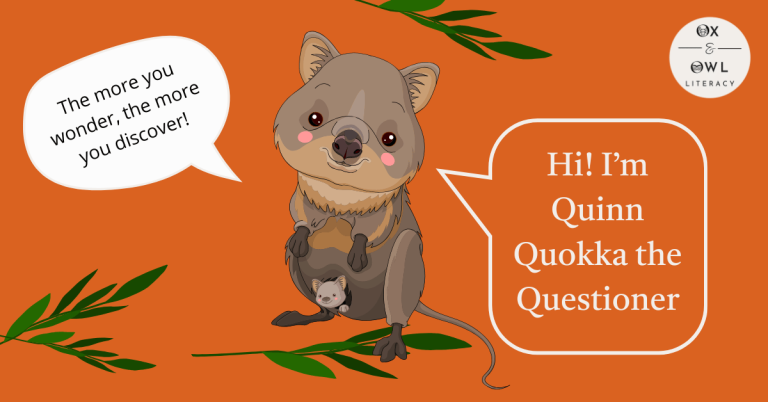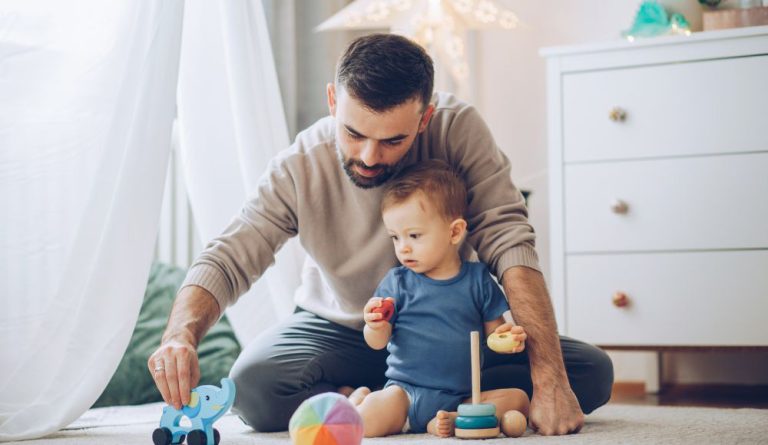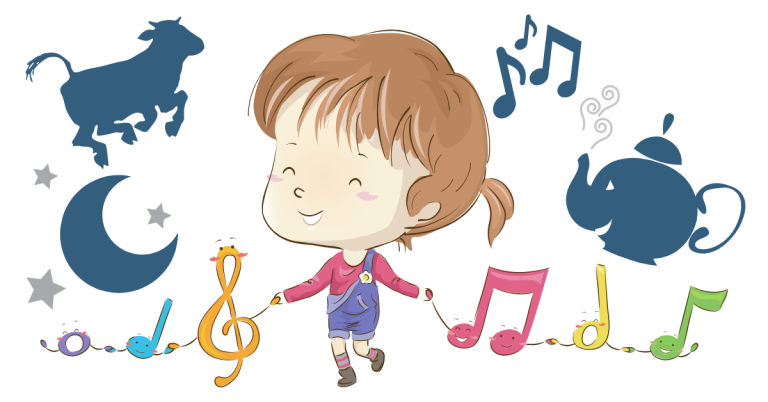Ways to Promote Joint Attention With Your Child
Joint attention is a significant development milestone in human communication. Learn how joint development occurs and ways to promote joint attention with your child.

Take a moment to imagine you’re at the park and your child spots a rabbit. He looks at you and says “Rabbit!”. Then points toward the rabbit and peers back at you to see if you see it. You look at the rabbit and say, “Oh wow, it looks like the rabbit is eating some grass.” Then you proceed to watch the rabbit together for another minute with your child peering over to you again to see if you are still watching too.
This small exchange may seem incredibly simple, yet it is an example of a type of interaction that has profound implications on a child’s development, called joint attention (also known as shared attention). This foundational skill of being able to initiate and coordinate attention to the same object or activity as another person is a significant developmental milestone in human communication.
In a world filled with constant distractions and digital devices vying for our attention, the ability to engage in meaningful and shared focus is more valuable than ever. Joint attention is a cornerstone of effective communication and social interaction and promoting joint attention can have far-reaching implications in your child’s development.
In this blog, we will explore a variety of strategies and activities designed to foster joint attention in children and improve this crucial skill.
Creating Connection: How to Develop and Promote Joint Attention
Promoting joint attention in young children is not only a key ingredient for successful early literacy but also an essential building block for their overall development.
Joint attention is a necessary skill for sharing information and experiences with other people. Research shows that the better a child’s joint attention skills are early on, the better their communication and general social skills are when they are older. Helping your child develop joint attention helps your child to interact and share interests with others, practice turn-taking, experience connection with people, develop perspective-taking skills, and learn to navigate social situations and put language to these experiences in meaningful ways.
How to Promote the Development of Joint Attention
Eye Contact
Tips
- Get on your child’s level
- Enthusiasm & facial expression
- Brief pauses – sometimes taking a brief pause before giving a toy to your child or pausing before responding is enough to have your child look up and make eye contact
- Shift objects closer to your face can create more opportunities for shifting between the object and yourself
Turn-Taking
Tips
- Taking turns encourages looking to another person for social clues, develops impulse control, and allows for shared experience –the key is to start short and simple
- Roll a ball back and forth a few times
- Take turns dropping something into a container or contraption (shape sorter; token jar; ball drop or tube, etc)
- Play a short game
- Utilize objects and activities that your child really likes
Imitation
Tips
- Games and songs like ‘Follow the Leader’, ‘Simon Says’, ‘Head, Shoulders, Knees, and Toes’
- Imitate your child: if your child bangs two things together, bang two things together; if your child claps his/her hands together, clap your hands together, etc.
- Imitation is the foundation for learning. For a child who struggles with imitation, start by imitating his/her movements, sounds, and facial expressions
Shifting Attention
Tips
- Games like Hide and Seek – where your child is encouraged to look to you for clues and gestures (you can hide a toy, present, or have a sibling or friend hide)
- Blow bubbles and pop them together
- Point or walk up to objects you want your child to look at or explore tactilely with you
- Use expression or animation to your advantage to gain your child’s attention: through facial expression, verbally, or physically through gestures and touch
- Change your volume or tone, such as whispering or talking like a robot
- Brief Pauses – sometimes taking a brief pause before giving a toy to your child or pausing before responding is enough to have your child make the shift in attention from object to you
Child-Led Activities
Tips
- Let your child choose the activity or way they want to engage with an activity
- Be attentive to initiations of communication verbal or non-verbal and respond
- Allow for trial and error, mistakes help children learn important concepts
- Don’t take over the interactions
- Observe, wait, and listen
- Mimic your child’s level of interest and engagement
- Do not correct or direct your child when he/she uses a tool or toy in a way that is not what it is intended for (unless it is harmful or grossly inappropriate) –allow them to pair things in unique and ‘out-of-the-box’ ways
- Take note of your child’s interests – they are often expanding and shifting with their development
Respond to Bids
Tips
- You can positively reinforce your child’s efforts in making attempts to initiate bids for joint attention by giving them your undivided attention, making eye contact, and responding thoughtfully
- Provide vocabulary and language – instead of only saying, “oh nice”, “cool”, or “Yes, I see it”, try to name the object and provide some context to help further your child’s understanding and exposure to vocabulary. For example, try “Wow, that is a big dog! It is wagging its tail excitedly. That dog is very happy!”
- Keep responses natural — avoid turning these moments into ‘work’ – remember that joint attention is about learning social skills and communication above everything else
Joint Activities
Tips
- Building something together
- Puzzles
- Cooking or baking
- Planting/gardening and watering plants
- Building a fort or putting up a tent together
- Crafting together
- Playing the piano or another instrument together
- Singing and dancing together
- Board games and other games
Manipulate Environment
Tips
- Deliberately put something in the wrong spot so your child will initiate a bid for your attention
- Make a mistake on purpose or do something silly
- Do something out of routine
- Read a book your child knows well and insert a line of your own and see if your child catches it (or a classic nursery rhyme or song)
Music & Movement
Tips
- Music is a great way to increase language and communication skills and children tend to respond well to music
- Use slap-clap patterns with music your child can imitate and later do with you simultaneously
- Take turns making drumming pattern sounds on a drum
- Put on little musical performances
- Dance to music
- Music therapy
WordPlay Zone

Sing a Counting Song About Ants
Why not sing The Ants Go Marching with your little learner(s)? This is a classic song that helps teach numbers and rhyme.
Get the lyrics for the song The Ants Go Marching and other classic nursery rhymes and songs!

Guess the Compound Riddle
Where ants go marching ten by ten,
You’ll find me gleefully following them.
A tasty snack, a delicious treat,
Ants are what I love to eat.
What Am I?
Joint Attention and Shared Reading Experiences
As parents and educators, nurturing joint attention skills can be a powerful tool in paving the way for strong language and reading abilities in our little ones.
The act of sharing your attention with your little learner during a cozy storytime is a key aspect of why reading with children yields profound effects on their language and literacy development. Reading to children helps them understand how books are a source of sharing information. Through this shared experience, children are exposed to a rich array of vocabulary, presented in various contexts, which, in turn, nurtures their listening comprehension—a skill that forms the bedrock for future reading comprehension.

Creating a routine with reading, where you read or tell stories during a particular time in the day, be it before bed, first thing in the morning, or before or after nap time, can lead to greater success with children attending to a book with you. Young children respond well to consistency as this helps them know what to expect. Point to pictures, ask open-ended questions, and encourage your child to do the same. These moments of reading together can be a powerful way of bonding with your little one and enjoying the beautiful world of story together.
Key OOLiteracy Takeaways
Nurturing Little Minds, Sparking Big Dreams

I’m happy you’re here!
Hi, I’m Julie, the passionate creator of Ox & Owl Literacy. I enjoy empowering families and educators with wonderful resources to inspire fun, imaginative, and joyful learning opportunities for young kiddos. You’ll find lots of recommended books, reading resources, and creative learning activities on this site aiming to help children fall in love with language, books, reading, and the transformational power of stories.


















